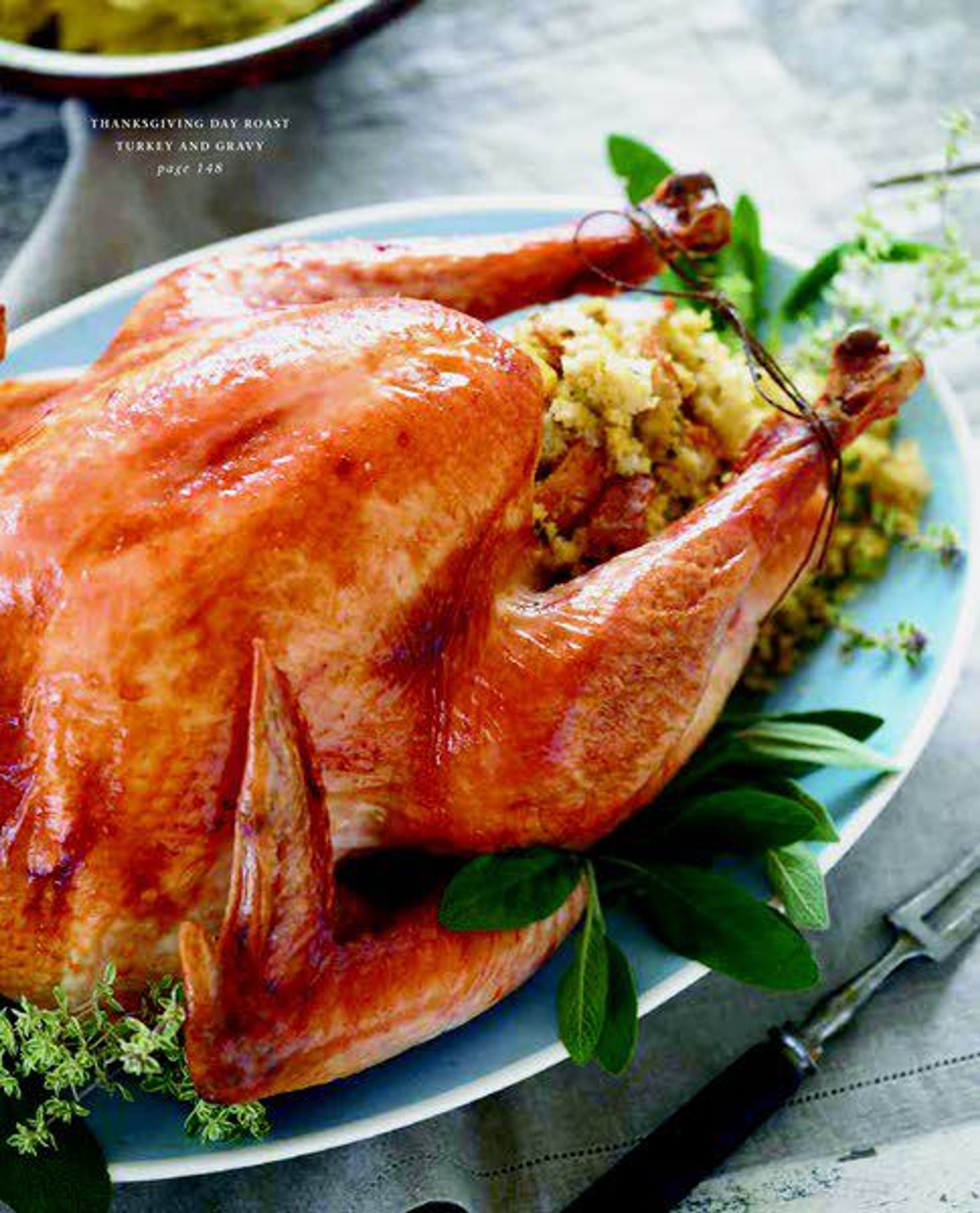This month, I have teamed up with Executive Chef Jamie Callison of the WSU Carson College of Business. By following a few basic safety tips and the recipes below, you are ensured a safe and mouth-watering feast for your holiday meal.
If you are buying a fresh turkey, purchase it no sooner than one to two days before your feast. For frozen turkey, be sure to buy it well in advance to allow adequate time for defrosting. For every 4-5 pounds of turkey, you will need 24 hours of defrost time. Always defrost the turkey in the refrigerator. A thawed turkey can remain in the refrigerator an additional one to two days after thawing. If you find your turkey is still frozen come Thanksgiving morning, you can defrost it by submerging the wrapped turkey in cold water, ensuring it is completely covered and changing the water out every 30 minutes. Always place the turkey on a tray or in a pan in the refrigerator to catch any juice that may leak. Keep it stored on the bottom shelf of the refrigerator until you're ready to cook it.
The following recipe was adapted from Callison's book, "The Crimson Spoon: Plating Regional Cuisine on the Palouse" (wsupress.wsu.edu/product/the-crimson-spoon/).
Roast Turkey
14 lb. turkey
2 oz. butter (1/2 stick), melted
Kosher salt and fresh ground black pepper or seasoning salt
3-4 cups southern-style cornbread stuffing (see "The Crimson Spoon" or use your favorite)
2 cups turkey stock (see below) or unsalted or low-sodium chicken broth or stock
Turkey Gravy
4 cups turkey stock (see below) or unsalted or low-sodium chicken broth or stock
1/4 cup turkey fat or canola oil or a combination
3 tablespoons flour
1/2 cup whipping cream, warmed
1 roasted turkey neck
Kosher salt
Fresh ground black pepper
Directions:
Preheat oven to 350°F.
Always wash your hands for 20 seconds with soap and water before and after handling the turkey. Remove gizzards and neck from inside of turkey cavity, reserving the neck. Rinse the inside of turkey with water until it is clear. Do not wash the exterior of the turkey. Dry inside and outside with paper towels. Brush turkey with melted butter; season inside and outside with salt and pepper. Brush neck with butter and season with salt and pepper. Lightly pack stuffing in turkey. Transfer turkey and neck to a roasting pan. Roast 25 minutes, then begin basting turkey with stock. Wash all counters, sinks and utensils that have been in contact with the turkey with soapy water. Roast turkey until meat is fully cooked, about 4 1/2 hours, basting with stock every 15 minutes and removing neck when it is golden brown and fully cooked. Check the internal temperature of the turkey to ensure that it has reached a minimum internal temperature of 165 degrees by inserting a meat thermometer into the thickest part of the thigh.
Allow neck to cool, then remove meat from the bone and roughly chop; set aside for the gravy. Remove turkey from the oven. Remove stuffing from the turkey and transfer it to a baking dish. Transfer turkey to a platter and rest for 20 minutes; slice meat and keep warm at a minimum temperature of 145 degrees. Bake stuffing until cooked and has reached a minimum internal temperature of 165 degrees, about 20 minutes. Keep warm at a minimum temperature of 145 degrees.
To make the gravy, pour the stock from the roasting pan into a high-sided bowl, and transfer the bowl to an ice water bath. This will cause the fat to rise to the top and solidify. Once the fat has solidified, spoon it off and reserve it for the gravy. Then add enough stock to the defatted stock to measure 4 cups. Heat roasting pan on the stovetop over low heat; add about 1 cup of the stock, and whisk to loosen pan drippings. Transfer back to the rest of the stock. Measure 1/4 cup turkey fat, adding canola oil if necessary. Whisk together fat and flour in a saucepan over medium heat until it turns golden blond. Whisk in stock and bring to a boil, reduce heat to a simmer and cook 20 minutes, whisking occasionally. Whisk in cream and chopped turkey neck meat. Season with salt and pepper.
Makes a 14-pound roast turkey (about 2 1/2 pounds white meat and 1 1/2 pounds dark meat) and 4 cups gravy.
Turkey Stock
Bones from 14 lb. roast turkey, broken into sections
3 cups chopped onions
2 cups chopped carrots
2 cups chopped celery
2 rosemary sprigs
4 thyme sprigs
2 bay leaves
1 tablespoon black peppercorns
Put turkey bones in a large stockpot; add cold water to cover by 3 to 4 inches. Bring to simmer, then add vegetables, herbs and peppercorns. Simmer over low heat four to six hours, skimming foam and fat. Strain broth. Cool to room temperature, then immediately place stock into multiple smaller containers to allow for rapid cooling. Refrigerate immediately. Makes about 6 cups.
Be sure to refrigerate or freeze the turkey and any other leftovers in shallow containers within two hours. If leftovers are refrigerated, be sure to consume or freeze them within three to four days. Cooked turkey will keep for three to four months in the freezer. Always reheat the leftovers to 165 degrees or until hot and steaming, and bring gravy to a boil before serving.
Enjoy your holiday feast.
Stephanie Smith is an assistant professor and statewide consumer food safety specialist for Washington State University Extension. Chef Jamie Callison is the executive chef in the Carson College of Business's School of Hospitality Business Management. Smith can be reached at food.safety@wsu.edu or at (855) 335-0575. Visit extension.wsu.edu/foodsafety/. Follow us on Facebook at www.facebook.com/wsuextfs/ or on Twitter at twitter.com/WSU_foodsafety.










